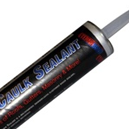What are Thermally Conductive Adhesive Sealants?
- 10 May 2016
- Posted by: Kim M
- Category: Article
 Thermally conductive adhesive sealants, as the terminology implies, are products that transfer heat. Designed to pass thermal energy through the bonded substrates of the material, the sealants turn insulating properties on their head by favouring heat exchange over heat isolation.
Thermally conductive adhesive sealants, as the terminology implies, are products that transfer heat. Designed to pass thermal energy through the bonded substrates of the material, the sealants turn insulating properties on their head by favouring heat exchange over heat isolation.
Used in computers, electronics, and many industrial applications, the material dissipates potentially damaging thermal events. A hot processor, for instance, runs more efficiently when this sealant bridges a gap between the processor base and a heat sink. Next, electrical lighting fixtures use the sealant to physically block construction openings while allowing the passage of trapped heat. The foam provides a superior mechanical bond and a handy electrical insulation feature, but temperature rises, the ones caused by electrical energy, are safely managed so as to ensure thermal conditions remain manageable.
Securely bonded and surface-mated, thermally conductive adhesive sealants provide a strong thermal interface. The material is viscous on application, meaning the paste-like stuff fills crevices and irregular contours. It spans small gaps and forms a multipurpose bond. The product is, therefore, a strong adhesive, but it’s one that also provides a combination of insulating and conducting services. Insulation comes in the shape of electrical resistance, but this property is offset by the aforementioned thermal conductivity property, a characteristic that’s measured and attached to the product documentation alongside other relevant product traits.
In order to truly understand the essential nature of this versatile sealant, we need to consider scenarios where heat is just a regular emission, one that needs to be dealt with. We can blow cold air over the part or find some other innovative means to shift the energy before it damages a heat-sensitive component, which is why thermally conductive adhesive sealants exist, in the first place. The fan helps, of course, as does an exhaust channel, but the sealant creates a proper mechanical bond. It then conducts and dissipates the heat, channeling it towards an assembly designed for just this purpose. A heat sink, for example, absorbs heat stored in the sealant and elevates the efficient diffusion of thermal energy to the next level. This methodology applies to batteries, aerospace applications, high-energy electrical appliances, and numerous other energy-intensive applications.
The building industry uses many sealants, with some creating water and thermal barriers. Others, the energy-conducting variants, transfer, dissipate, and channel energy. They move heat away from sensitive areas so that they can generate light, computing power and, yes, even more heat so that the building envelope can be intelligently shaped through both heating and cooling technologies.

